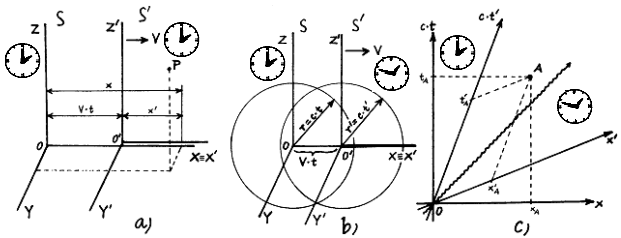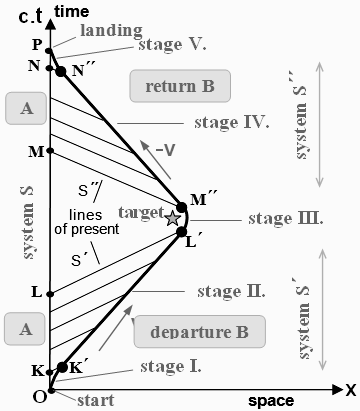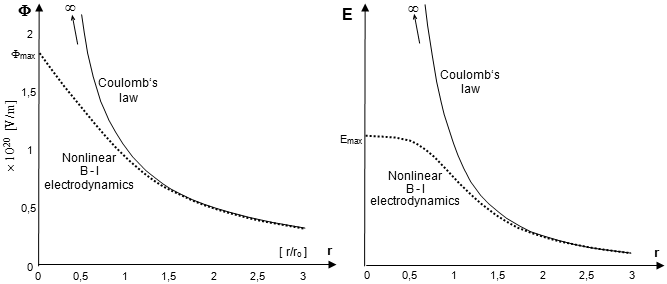
Fig.1.5. Coordinate transformations between inertial frames of reference.
a) Galileo transformation. b) Derivation of Lorentz transformation. The light flash emitted at time t = t' = 0 from the beginning O (which at that time coincided with O' ) propagates on all sides at the same speed c from the point of view of both systems S and S', so that at time t it fills the spherical wavefront o radius r = ct, resp. r' = c.t'.
c) Geometric representation of the Lorentz transformation. If the default reference frame is S in space-time ascribed (pseudo) Cartesian coordinate system ct, x, then the transition to the moving frame of reference S' geometrically means a deformation to oblique for the affine sharp-angled coordinates c.t', x'.
Note: The image of the clock symbolically shows the speed of time in the systems S and S' (see below - time dilation).













